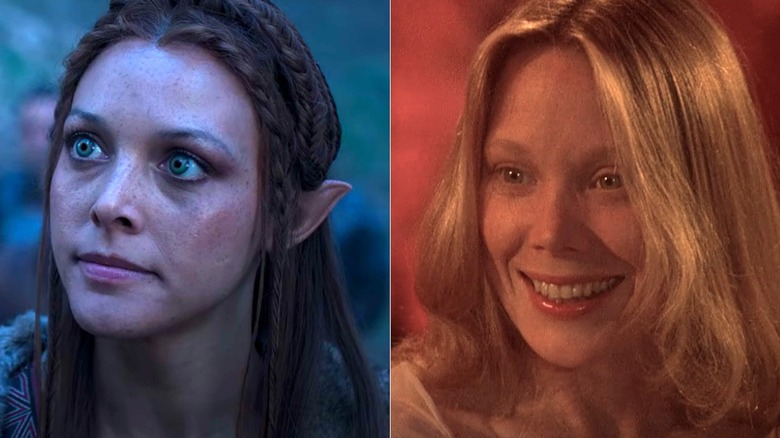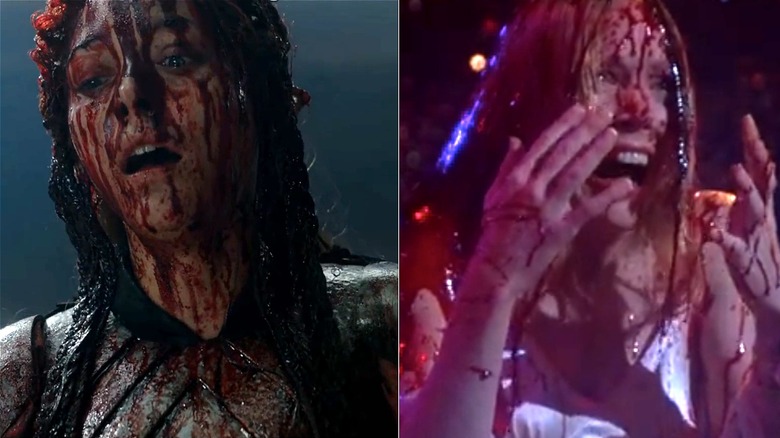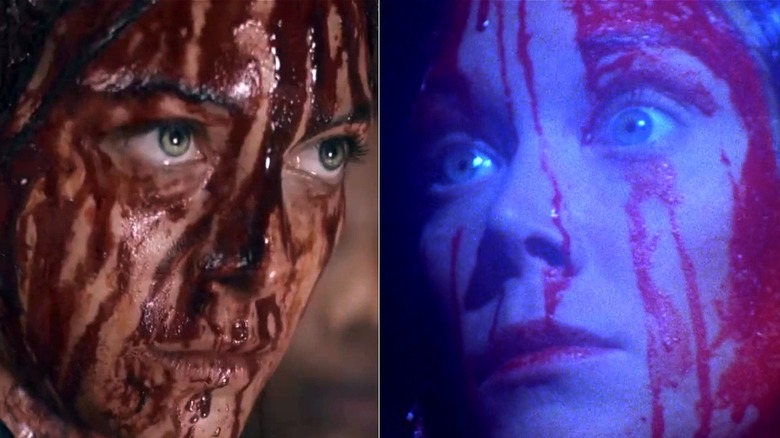The Witcher S3: Why One Scene Looks Familiar To Stephen King Fans
Contains spoilers for "The Witcher" Season 3, Episode 6 — "Everybody Has a Plan 'til They Get Punched in the Face"
Netflix's "The Witcher" Season 3 Volume 2 is now upon us, and while fans of Andrzej Sapkowski's novels will recognize quite a bit of the author's original narrative in the drama, tumult, and devastation at Aretuza, fans of an altogether different author — the king of horror himself, Stephen King — will have plenty to talk about as well.
In Episode 6, Mecia Simson's Francesca Findabair — an elven sorceress, leader, and warrior — storms into the increasingly chaotic coup on Thanedd Island at the head of an army of Scoia'tael guerillas. We quickly learn that the (recently revealed) villain Vilgefortz (Mahesh Jadu) has enlisted the elven rebels to assist in his overthrow of the Brotherhood. Along with his alliance with Nilfgaard, it's all part of the sorcerer's plan to obtain as much power as possible — a plan that, for obvious reasons, also includes obtaining Freya Allan's Ciri (unbeknownst to her father, the emperor of Nilfgaard). As for Francesca, she's as desperate as ever to reclaim Dol Blathanna, and perhaps even the Continent, so that her species might once again live and thrive in peace.
It's an uneasy allegiance, but one that ultimately pits Francesca against Aretuza and sees Tissaia de Vries (MyAnna Buring) come at the elven leader with all she's got. When Tissaia fires a ball of Chaos at the elf, Tom Canton's Filavandrel — an elven king and the father of Francesca's recently murdered newborn — leaps in front of her, is struck by the deadly orb, and promptly explodes into a viscous burst of blood and bits of matter that saturates Francesca from head to toe. That's where King, and director Brian De Palma's adaptation of his novel "Carrie," comes in.
Francesca embodies Sissy Spacek's iconic prom queen
From the extreme close-ups of her wide eyes and blood-soaked visage to the jerky movements of her head as she unleashes her violent telekinesis on the well-dressed crowd to her slamming the room's double doors shut with a glare and a chin tilt, every move the traumatized, infuriated elf makes recalls Sissy Spacek's Oscar-nominated movements — as well as a fair bit of the camera angles — in Brian De Palma's horrific prom scene. Like Carrie, Francesca even manages to set the room and its trapped inhabitants ablaze in her attack.
There is, of course, a big difference between reigning hell down on your enemy in the midst of battle and unleashing an almost ungovernable eruption of demonic rage on an entire auditorium of largely benign bystanders as a response to helplessness and humiliation. That difference is at the heart of "Witcher" creator Lauren Schmidt Hissrich's homage, which is more than just a clever aesthetic wink at Stephen King's sanguinary, satin-clad killer.
Horror — and the centuries-old mythological and religious fears and anxieties upon which it thrives — has long used the female body, female sexuality, and menstruation as metaphoric stand-ins for all things beastly, unclean, uncontrollable, and unholy. This particular trope permeates Andrzej Sapkowski's "Witcher" series in a big way, but like so much of the longstanding lore, legend, and mythology he taps into to create his intentionally referential world, it undergoes its own transformation.
The Witcher's nod to Carrie makes perfect sense
Ciri's powers come from her Elder blood, and it is ultimately her ability to reproduce the Lara gene that makes her especially dangerous and sought-after. However (and at the risk of spoiling the novels), unlike so many preternatural women before her, Ciri's story pivots on her bodily autonomy. The ability to reproduce one's blood is treated as a power, and like any other power, how and when it's used rests in the hands of the person who wields it.
But in case anyone's still confused about Andrzej Sapkowski's thoughts on humanity's repressed and repressive anxieties, the author uses the most hypersexualized and bloodlust-y creature of all to clear things up in "Baptism of Fire": a vampire.
"Humans are most powerfully influenced by fears with a sexual origin," Regis says. "You unconsciously dream of something like it, but shy away from offering it to your lovers. So it's done for you by the mythological vampire, who as a result swells to become a fascinating symbol of evil" (pp. 300-301). His thesis is consistent and unmissable: Humans fear what we do not understand, and when it comes to sexuality, there's often quite a bit of fear at the root of it all.
By having the only fertile elf, Francesca, pay homage to arguably the most famous use of the "menstruation as demonic" trope, Episode 6 is not simply foreshadowing subtext to come, but underscoring the connection between power and blood and paying tribute to Sapkowski's use and subversion of it.


